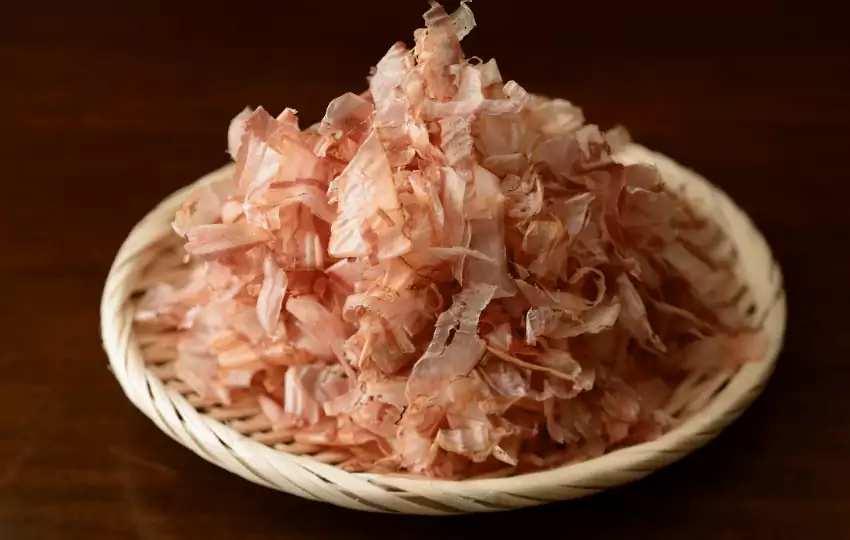Bonito flakes have amazing yet umami flavors used in several dishes from doup to casseroles, so it is important to know “what’s a good substitute for bonito flakes and how to use the alternatives” because anything can’t go instead of bonito flakes.
What are bonito flakes? Why are they called bonito flakes?
Bonito flakes are a form of dried fish, traditionally from the bonito fish ( Katsuwonus pelamis ), more commonly known as the skipjack tuna.
Because that’s what they are, or at least part of it. The other part is tuna loin.
What do bonito flakes taste like?
If you’ve never used them before, it’s hard to describe the taste of bonito flakes (or katsuobushi flakes, shaved dried bonito, etc.).
The most promising I can convey is that they have a strong umami flavor, somewhat similar to but not the same as dashi taste.
The best way I can describe them is to add a meaty flavor similar to what you might get by cooking with a variety of beef or chicken flavored stocks.
Where can I use bonito flakes?
Bonito flakes are used as a topping, condiment, or garnish for various dishes such as soups, noodles, and salads.
Is Katsuobushi the same as bonito flakes?
The katsuobushi fish is scientifically known as Skipjack Tuna or Euthynnus pelamis. While technically, it belongs to the mackerel family, it is often called ‘bonito’ in English.
However, not all bonito is katsuobushi. This is because katsuobushi specifically refers to this fish’s dried, smoked, fermented, shaved form.
Bonito are different sizes, some over 100kg. When they are small, they are called ‘Ko-i,’ which can be eaten fresh.
What can I use instead of bonito flakes?
If you are vegan or a strict vegetarian, you can use dried shiitake mushrooms, toasted soybean, kombu, nori, yeast, etc.
Otherwise, there are many options to alternate katsuobushi, including shellfish, baby anchovy, white fish, mackerel powder, etc.
Let’s see how can you substitution these alternatives for bonito.
10 Best Substitute for Bonito Flakes, aka. Katsuobushi
1. SHELLFISH- Perfect Alternative to Bonito Flakes
Shellfish are the most perfect choice to replace bonito flakes. Shellfish are a type of seafood that live in water and have a shell. They can be eaten cooked or raw.
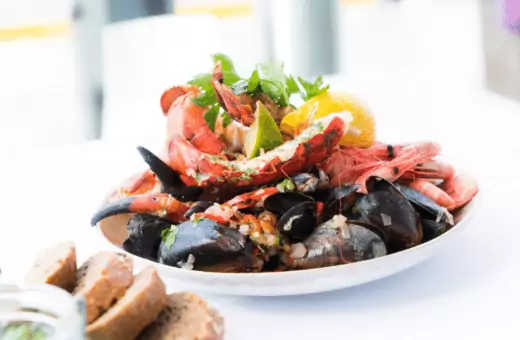
There are many different types of shellfish, including clams, oysters, scallops, and mussels. Shellfish powder is made from ground-up shellfish shells. You can use it as a seasoning in food or as a dietary supplement.
You can use either shellfish stock or shellfish powder to substitute bonito flakes.
Because it is made with such flavorful ingredients, shellfish stock has a distinctly rich and savory taste that is perfect for enhancing the flavor of soups, stews, and other dishes.
In addition, shellfish stock is also a great way to add some extra protein to your meal. Use a 1:1 ratio for bonito flakes.
2. Dried Bonito flakes Substitute Vegetarian- DULSE FLAKES
Do you hear about Dulse? Dulse is a type of sea vegetable matching to bonito flakes. They are a type of seaweed that can be used in cooking.

Dulse flakes have a salty, smoky taste and can be used as a garnish or added to dishes. They are rich in fiber, protein, vitamin B6, and iron.
Dulse is sometimes sold as dried flakes, but you can also find it fresh at some grocery stores. Use double dulse instead of bonito flakes, but make sure about salt as it has a salty flavor.
3. Vegan Substitute for Bonito Flakes- DRIED SHIITAKE MUSHROOM
Dried shiitake mushrooms are widely used in cooking. They have a very strong, earthy flavor and a chewy texture.
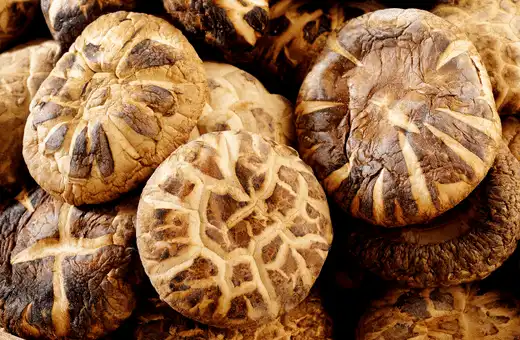
Dried shiitake mushrooms are often used in Asian cuisine, where they are either cooked whole or ground into a powder.
Dried shiitake mushrooms can also be used to make a broth or stock. They can be used in soups, rice dishes, and meat stews recipes.
4. SHREDDED NORI – Vegan Substitute for Katsuobushi
Nori or shredded nori is another good alternative for bonito flakes. It is a dried seaweed that is often used in sushi. It has a salty, ocean-like taste and can be used in various dishes.
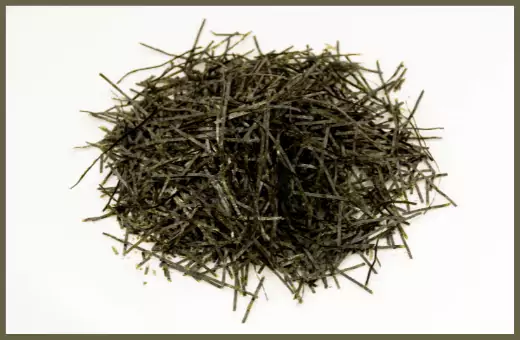
Shredded nori can be added to salads for a nutrient boost or used as a garnish for soups or noodle bowls. It’s also an excellent addition to sandwiches and wraps.
When shopping for nori, make sure to avoid the brands that have been toasted. It should ideally be a darker shade of green and made of 100% seaweed.
Nori is rich in iodine, calcium, iron, and vitamin A. It’s also low in fat and carbs.
Nori is about 87% water, so if you’re looking for a way to hydrate yourself during the day, simply eat a sheet of nori for instant hydration. So nori is a healthy alternative that can add easily to your diet.
5. KOMBU Best Katsuobushi Substitute
When it comes to making katsuobushi, the process can be a little daunting for some. This is especially true if you don’t have the necessary equipment or ingredients. If you’re looking for an alternative to katsuobushi, then kombu is an excellent option.
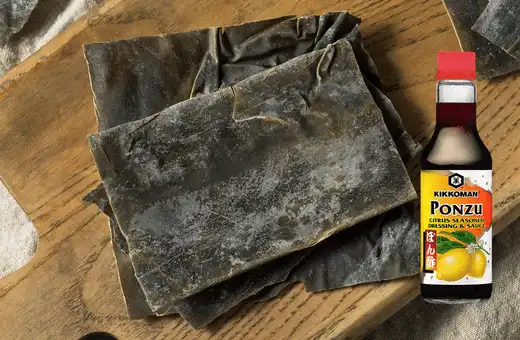
Kombu is a type of kelp that is widely used in Japanese cuisine. It has a savory flavor and a slightly chewy texture.
Kombu can be used to make dashi, a type of broth used in many Japanese dishes. It can also be used as a marinade or seasoning agent.
Kombu is sold in the refrigerated section of Asian supermarkets. Look for a package that contains large pieces of kombu.
Read more- Best Kombu Substitutes for Everyone
Make sure the package is not flimsy or see-through. Try to choose a kombu with a light brown color that doesn’t smell fishy.
6. Use IRIKO Instead of Bonito Flakes to Make Dashi
Iriko Dashi is an excellent alternative to bonito-flavored dashi for making miso soup and udon noodle bowls. It also complements the flavor of kombu broth very well, so it’s perfect if you’re looking to make your own versions at home!
You can find Iriko or baby anchovies in Asian Stores. They are sometimes named niboshi as well. Iroko gives you the same umami flavor of bonito flakes.
7. NUTRITIONAL YEAST -Decent Replacement for Bonito Flakes
Nutritional yeast is a strain of Saccharomyces cerevisiae that has been deactivated used as a food supplement or as an ingredient in vegan and vegetarian recipes.
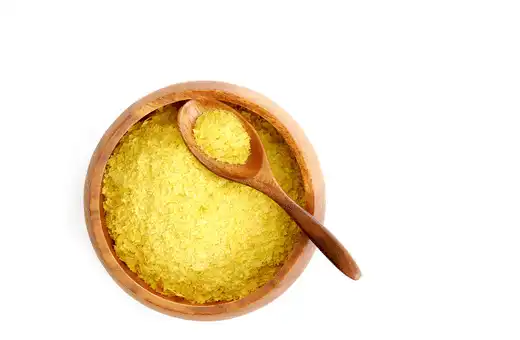
It is produced by culturing the yeast with sugarcane or beet molasses, then harvesting, drying, and packaging the yeast.
8. TOASTED SOYBEANS Vegan & Vegetarian Alternatives for Katsuobushi
Those that cannot stand either fish or mushrooms should definitely try soybean dashi. The key is toasting the soybeans with utmost care and patience, like your favorite brown rice for dinner tonight!
The delicate taste of soybean dashi will not overwhelm other ingredients in your dish. To re-create this endearing stock, simply combine toasted beans with water at a ratio of 50/50 and wait for about an hour before boiling it on low heat until all flavors meld together seamlessly!
9. WHITEFISH is a Good Choice for Bonito Flakes Substitute
Many people are looking for a good whitefish substitution for bonito flakes in their recipes. My personal favorite choice for this substitution is cod.
Cod is a great whitefish option because it has a mild flavor and a flaky texture that functions well in recipes that call for bonito flakes.
10. MACKEREL POWDER Similar Taste of Katsuobushi
There are a few substitutes for bonito flakes that can be used in Japanese cuisine. One of the most popular substitutes is mackerel powder.
Mackerel powder is made from ground-up mackerel. It has a similar flavor to bonito flakes and can be used similarly.
Other substitutes for bonito flakes include dashi kombu (kelp) and niboshi (dried sardines). These substitutes are used to make dashi (stock) and can be found at Japanese markets.
How do you make bonito flakes at home?
Bonito flakes are typically made by thinly slicing bonito fish fillets and dried in the sun.
The dried fish is then smoked for several days to give it a distinctive woody, smoky flavor. The fish is then shaved into thin strips or flakes and packaged, ready for retail.
Is bonito the same as dashi?
When you’re cooking, how many times have you heard “just use dashi instead of bonito flakes” or “the recipe calls for dashi, but you can use bonito flakes if you want.”?
It would seem like dashi and bonito are two completely separate things. Still, they’re actually two ways of extracting the umami flavor from katsuobushi.
Dashi is a term that encompasses both bonito-based and konbu-based broth.
Think of dashi as the base flavor and bonito flakes as an ingredient that adds umami.
We recommend using dashi for the best flavor when you want to use bonito flakes.
How to make dashi without bonito flakes?
As you’ll see on the Dashi Recipe page, we mostly use Dashi Packets (the granulated kind).
But if we don’t have any on hand, we just use a simple dashi recipe that doesn’t require any special ingredients.
You need to make dashi water, kombu (dried kelp), and katsuobushi (dried bonito flakes).
As for the water, you could use tap water if it tastes good to you, but I suggest using filtered water for the most satisfactory results.
As for kombu, it will keep forever if kept cool and dry. I buy it in bulk at the local Asian market (which, again, has delicious cheap food) and keep it in my freezer.
Anyway, there’s really no such thing as bad kombu. I once put some in a soup by mistake, and the soup was delicious with it in there!
As for the katsuobushi, it will last a lot longer if kept in an airtight container in your fridge.
You can buy katsuobushi or make your own, but I made my own because it’s really easy.
Making Your Own Katsuobushi – Also known as Bonito Flakes. Here’s what you need:
Serves 5-6 people as a condiment for rice and other dishes.
Equipment:
Cutting board & chef’s knife Metal sieve or Large colander bowl to catch fish juices Medium pot, or something to weigh with Wide pan or frying pan that the metal sieve will fit into
Ingredients:
Bonito flakes (katsuobushi) Freshwater
Instructions:
1. Put some bonito flakes into the metal sieve and shake over a pan to remove excess fish oil.
2. Put the bonito flakes into a pot and add fresh water.
3. Bring to a boil and let simmer for 15 minutes.
4. Pour off water and bonito flakes into the large bowl to catch fish juices. Let cool and store in the fridge until ready to use.
That’s all there is to it! (…okay, you have to repeat the process a few times until you have enough flakes, but that’s not hard.)
Now you can make dashi anytime.
Read more- Ideal Clam Juice Alternatives
Wrap Up on Substitutes for Bonito Flakes
If you want a delicious, savory topping to add an extra dimension of flavor to your food, look no further than katsuobushi.
This Japanese fish product is made from dried and smoked skipjack tuna that has been shaved into flakes or shavings with a special knife called “katsuramuki.”
It’s commonly used in soups like miso soup, but it can also be added as a garnish on top of dishes such as ramen noodles or rice bowls.
If you find a vegan option go with nori dried shiitake mushrooms, and also you can use toasted soybean.
These delicacies are typically available at Asian grocery stores near the soy sauce section. Give them a try!
FAQs Related to Substitute for Katsuobushi
Q1. What is dashi no moto?
Dashi no moto is a popular Japanese seasoning made from kombu, a type of kelp, and dried bonito flakes. It is used to make dashi, a broth used in many different Japanese dishes.
Q2. What fish is used for bonito?
Bonito is a large fish that belongs to the Scombridae family, including tuna and mackerel. It’s also known as skipjack tuna, Eastern Little Tunny, Eastern Bonito, Black Bonito, or Black Skipjack.
Q3. What is bonito flakes in Chinese?
Jiān, dà’ěr yú chī -There are a lot of different names for bonito, but the most common one is shā dīng yú.
Shādīng yú literally means sand bass fish. It is a type of white fish that has a pale pink color. Most people in China usually call it by its Japanese name, katsuo.
Another term used to refer to bonito is shòuyú. Shòuyú literally means “sturgeon fish.” Compared to katsuo, this fish is larger and has a different shape.
Q4. Are bonito flakes Kosher?
NO. The dried bonito flakes used in dashi aren’t certified kosher, so normally, no.
Q5. Are bonito flakes high in sodium?
The nutritional content of bonito flakes varies depending on the brand. Overall, 100 grams of bonito flakes contain about 2,000 mg of sodium.
· This is approximately 94 percent of the daily recommended sodium intake for adults. The high amount of sodium in bonito flakes means that consuming them may raise your risk for high blood pressure and other health problems related to a high sodium intake.
Q6. Do you refrigerate bonito flakes?
You might even be wondering what that label on the back of your bonito flakes bag says. Most often, it says, “Refrigerate after opening.”
So, should you refrigerate bonito flakes? No. You shouldn’t. There are several reasons why.
First, we’ll clarify what’s actually in your bonito flakes.
Bonito flakes are made of dehydrated tuna, and sometimes they contain added MSG. Hence, it’s completely understandable to wonder if there are any ickies in this product.
However, when you add water to bonito flakes, you’ll find that they reconstitute pretty well. So the dehydrated tuna is simply tuna and salt, and the MSG is a naturally occurring flavor enhancer. In other words, no ickies.
So why do they tell you to refrigerate bonito flakes?
It’s not because of any health concerns. The reason they tell you to refrigerate bonito flakes is to keep the flakes from sticking together after they’ve been opened.
The manufacturers add anti-caking agents to the bonito flakes when they make them. Sometimes, these anti-caking agents can stay clumpy after opening if they’re exposed to humidity.
Refrigerating bonito flakes dries them out again and clears up this problem.

